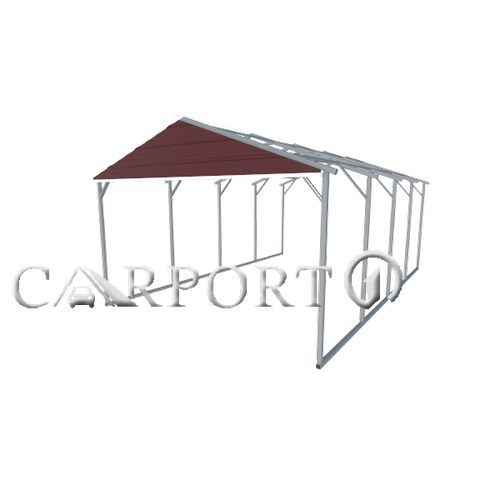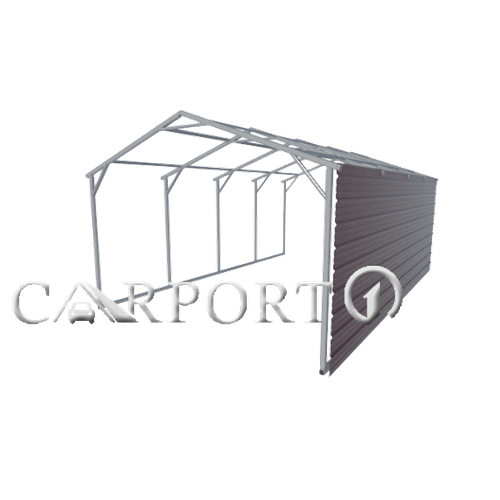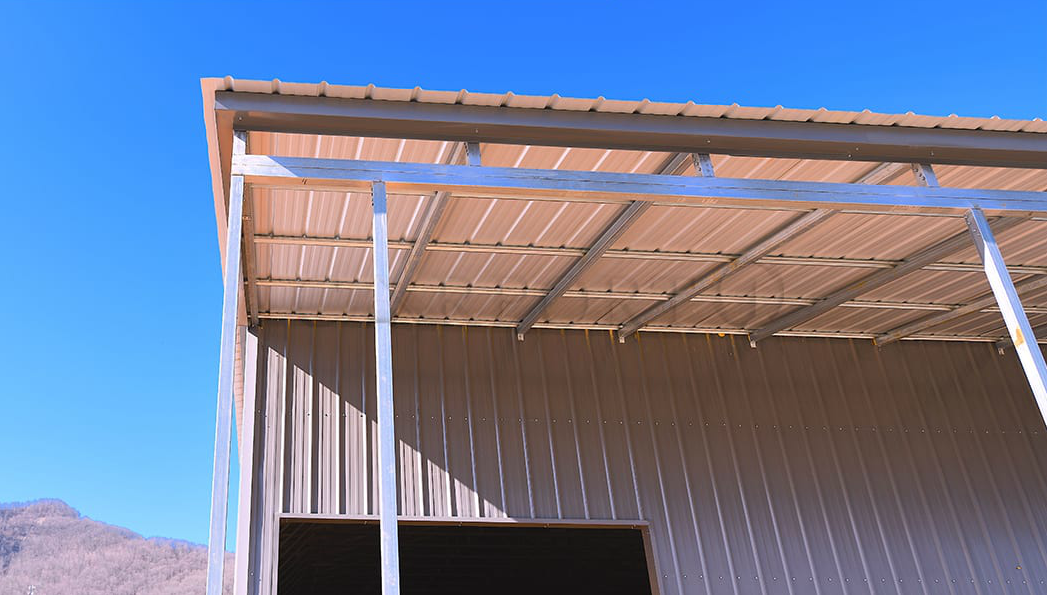Customization and Additional Options
Gable Ends

A Gable is an additional feature that gives coverage to your carport, you can apply it to the front and/or back end of any Carport1 Metal Building, Carport, Cover, or Structure. It is the triangularly shaped metal sheet added to the roof to provide structural support. Gable ends help tightly fasten the roof with the side of the building. They provide additional support to the carport roof.
If you want an affordable way to style your carport, then we recommend going with the gables and side panels (See below). Metal carports and metal buildings with gable ends are recommended where harsher weather is common, and the installation of Vertical styled roof and Boxed Eave roof is more frequent.
Side Panels

A panel is a flat steel structure added to the sides or frames to provide additional support and strength to the overall carport’s structure. They offer extra protection to the structure and the property. Areas that receive heavy wind and are closer to tornado or hurricane inflicted areas should consider adding panels to their metal structure.
You can also add side panels to the barn either in a horizontal or vertical orientation for a more polished aesthetic.
Bows and Trusses
Bows and trusses are common supports provided to the roof of the metal building. Heavier or wider roofs may require additional bows and trusses for supplementary assistance and stability. The metal building owners living in the areas with heavy snowfall and heavy rain should consider adding bows and trusses to offer additional support to the roof. Generally, metal structures with a width size of 24 ft. will include a bow and those wider than 24 ft. will have a truss.
Types of Roof Trusses
There are numerous truss styles that are available in the market that are used in metal building construction. Some of the more popular styles of metal building roof trusses are...
Pratt Truss
It is the most common and economical truss type where the members (metal frames) are placed vertically. These vertical members are designed for the compression. Diagonally placed members are designed for the tension.
Warren Truss
In a Warren truss, the diagonally placed members are designed to create a shape of ‘W.’ The advantage of using the ‘W’ shape is that they possess equal strength in compression and tension. Hence, a Warren roof may require less number of members as compared to a Pratt truss.
Fink Truss
A Fink Truss is known for short sized members and chords. The arrangement for compression and tension depends on the construction they will be used for. They work well for smaller roof designs.
King Post Truss
A King Post Truss has two-angled support members and is used for a short span of around 8m (26ft). A King Post Truss works well for metal buildings with smaller roofs.
Queen Post Truss
Queen Post Trusses are similar to the King Post Trusses. They are used for a short span of around 10m (33ft). The outer supports are angled towards the center of the structure. However, the major difference in this design is the horizontal extension lying at the center which relies on beam action to provide mechanical stability.
Howe Truss
Howe Trusses are known for the versatility they offer. They have a wide span which can cover up to 30m (99/100ft). They are mostly used for building bridges.
North-Light Truss
A North-Light Truss is one of the oldest remaining designs. They offer durability and versatility through proper ventilation and a wider span ranging up to 100ft.
How Metal Trusses Differ
Trusses are generally used for larger buildings that need to have greater widths. They offer better structural integrity and strength in comparison to the simple bows, but they do come at an additional cost. Understanding when your metal building requires a trussed roof is very important to ensure the resistance of the building against various forces.
Metal trusses do differ from one roof style to another. Every roof style has some specific requirements to fulfill which can only be attained by designing a specific size with certain metal gauges, panels, bows and trusses.
Dead Load vs. Live Load
Dead Load
Dead loads are the own weight of the materials used while building the roof structure. These forces act vertically and can affect the overall structure’s weight. To evenly distribute the dead load to the entire metal building, trusses are placed strategically throughout under the roof.
Live Load
Live loads or Structural loads are forces, deformations, or accelerations applied to a structure or its components.
Wind can create a suction force which applies extra weight to the roof. The pressure of the wind load depends on the roof shape, wind direction, and location of the building. For additional support, extra trusses are added. Snow load can also heavily affect the roof. The force applied to the structure from heavy snowfall can lead to extra weight and deformation. Hence, trusses are placed strategically to support the life load of the roof.










